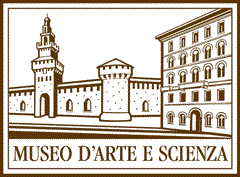|
||||
Reliability
and accuracy of the spectroscopic method
| The need for a new method applicable also to single antiques |
|
The validity of spectroscopic wood-dating method is acknowledged by scientific organizations, associations of restorers and, increasingly, famous museums worldwide. In the 15 years of its existence, our laboratory has performed over 20,000 dating analyses both for research purposes and on behalf of third parties, each measurement confirming the reliability of the method or contributing to its improvement.
The
quest for a new method was begun in
1980 because existing methods, the C14
method and dendrochronology, owing to
their well-known intrinsic limitations,
could not provide certain results for
the scientific dating of the
approximately 1,000 wood antiques
belonging to the present Museo d'Arte
e Scienza. This situation was and
continues to be common to most
collectors of furniture, panel
paintings, musical instruments,
non-European art objects and so on. |
| Testing the validity of the new method |
|
After 3 years of experimentation in effecting measurements and compiling tables for the calculation of age on the basis of spectroscopic frequencies, in 1994-1995 our laboratory approached some important international museums requesting their collaboration in testing the method and improving the tables for the dating of the wood of presumably antique objects. The proposal was favourably received. Six of these museums were invited to provide us with two types of wood samples: (A) Wood from objects of certain dating for the calibration of the tables. (B) Blind samples, without any indications of age, the spectroscopic dating of which permitted them to evaluate the validity and precision of the method. The results of these comparisons demonstrated the accuracy and reliability of spectroscopic dating and have been published. |
Frequently Asked Questions (FAQ)
| Question |
Answer
(see also "Description of the Method", a paper presented to the AIC meeting in Miami 2002) |
| Is spectroscopy a destructive method? |
Almost all
scientific, manual and optical methods for the
ascertainment of authenticity require samples of the
material to be examined. These samples are normally very
small, weighing only a few milligrams, and their volume cannot be compared to the volumes of material destroyed by
insects, worms, corrosion, accidents etc. |
| Is there any sense in determining age when use could have been made of wood that was already old? |
The use of old wood can be
detected quickly and easily by comparing the
spectroscopic results of the outer layer of the wood
with those of wood taken from inside the object. |
| Is spectroscopic analysis inaccurate because chemical changes depend on the humidity and temperature of the environment? |
It is normal to pose this
kind of doubt. But wood is a very complex organic
material known for its extraordinary resistance to water
and heat. |
| Can the results of age dating be intentionally altered through manipulation of the wood? |
The possibility that
material has been manipulated must always be borne in
mind whenever determining the authenticity of an
object, and was our chief concern during early
experiments with spectroscopic dating. |
| Is the Milan laboratory sufficiently well equipped? |
The Matthaes Foundation is
in a position to acquire the most modern instruments and
apply the most suitable methods. |
| Are spectroscopic dating prices too low for scientific examinations? |
Spectroscopic dating is
carried out with instruments which are basic equipment
for the chemical industry and the health and research
sectors. |
| Are there known cases of erroneous measurements? |
Statistics tell us that about 60% of the antiques existing in the world are not authentic. Consequently 60% of dating should statistically not correspond to the presumed age. The fault is often attributed to the method. |
| What legal value do scientific datings have? |
All the countries in the Western world have laws punishing the sale of fakes and forgeries. Courts rarely pronounce judgements, however, since so far judges have only had expert opinions to base themselves on. The reliability of spectroscopic dating allows judges to give a clear sentence. |
